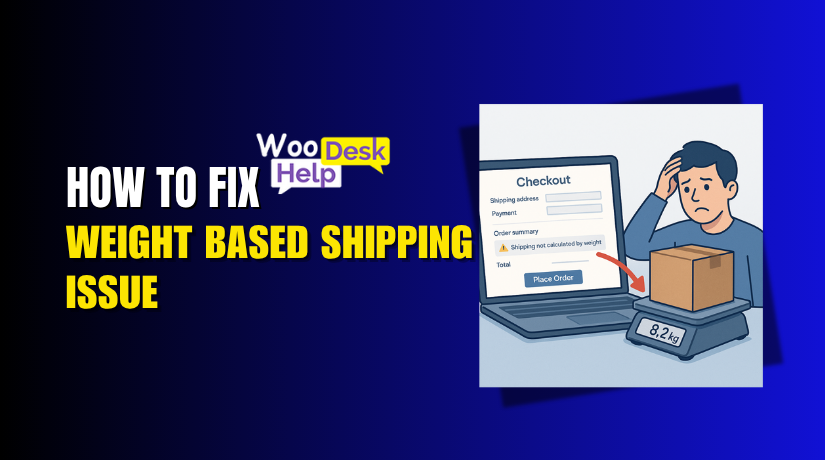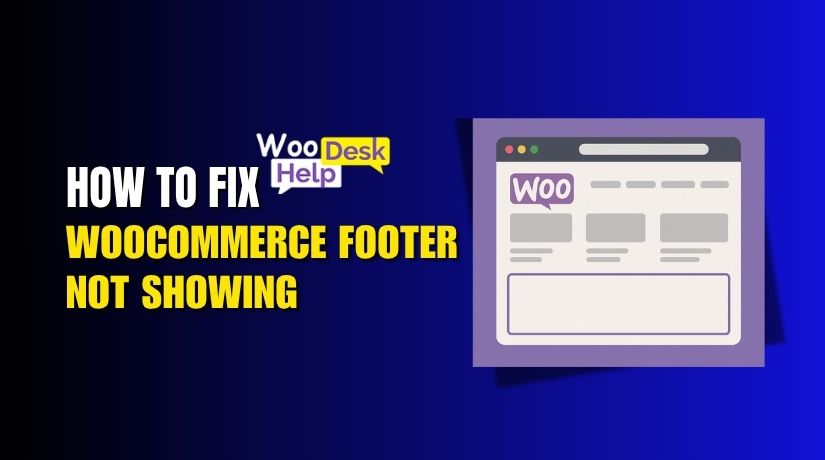
How to Fix WooCommerce PayPal Incorrect API Credentials Error
Table of Contents
- Introduction
- Common WooCommerce PayPal API Errors
- Understanding PayPal API Credentials
- How to Obtain the Correct PayPal API Credentials
- Correctly Configuring API Credentials in WooCommerce
- Troubleshooting PayPal API Credential Errors in WooCommerce
- Live Mode vs. Test Mode Errors
- Best Practices to Avoid Credential Issues
- When to Contact Support
- Conclusion
Introduction
If you’re using PayPal with WooCommerce, API errors can be frustrating. These issues often happen when your PayPal API credentials are incorrect or misconfigured. As a result, payments may fail or your store might stop accepting PayPal altogether.
For owners of WooCommerce stores, this is a typical issue. Even if you follow setup guides, a small mistake in entering credentials can trigger major errors. These problems can block orders and upset your customers.
In this guide, we’ll walk through the exact causes of PayPal API credential issues in WooCommerce. We’ll also provide practical steps to fix them. Whether you’re getting an error during checkout or testing payments, this article is for you.
First, let’s examine the most typical PayPal API problems that WooCommerce users may encounter.
Common WooCommerce PayPal API Errors
There are several PayPal API errors you might see in WooCommerce. Most of them mean something is wrong with your PayPal credentials. Either you’ve entered the wrong details, or the plugin can’t connect to PayPal’s servers.
The most frequent mistakes that users report are as follows:
- woocommerce paypal api error 10002
This means authentication failed. Usually, the credentials are incorrect or missing. - woocommerce paypal api credentials mismatch
Your API key type doesn’t match the PayPal environment (sandbox vs. live). - woocommerce paypal smart button api credentials error
This affects PayPal Smart Buttons when the REST API is set up wrong. - woocommerce paypal api credentials invalid response
WooCommerce couldn’t connect to PayPal or got an unexpected reply. - woocommerce paypal express checkout api credentials error
This happens when using old or expired Express Checkout credentials.
These errors may appear during:
- Customer checkout
- Test transactions
- Admin payment tests
- Plugin setup
Each error can look different, but most point back to one thing: incorrect or misconfigured PayPal API credentials.
Understanding PayPal API Credentials
To connect WooCommerce with PayPal, you need API credentials. They function similarly to digital keys, enabling communication between the two systems. If these keys are wrong or missing, the connection will fail.
There are two types of PayPal API credentials you might use:
- NVP/SOAP API credentials (Classic)
This includes a Username, Password, and Signature. These are used with older plugins like PayPal Standard or Express Checkout. - REST API credentials (Modern)
These include a Client ID and Secret. These are used with newer PayPal integrations like Smart Buttons.
You can link each method to your PayPal account. You must use the correct one based on the plugin you’re using in WooCommerce.
Another important detail is the mode you’re working in:
- Sandbox mode is for testing.
- Live mode is for real transactions.
If you use sandbox credentials in live mode (or vice versa), you’ll get errors like:
- woocommerce paypal api credentials test mode error
- woocommerce paypal api credentials live mode error
So, always make sure the plugin and the credentials are set to the same mode.
How to Obtain the Correct PayPal API Credentials
Getting your PayPal API credentials is easy, but it must be done carefully. Follow these steps to get it right:
For Classic (NVP/SOAP) Credentials:
- Log in to your PayPal Business Account.
- Go to Account Settings.
- Under “Account Access,” click API Access.
- Choose NVP/SOAP API integration (Classic).
- Click Manage API credentials.
- Copy the Username, Password, and Signature.
These credentials are used with:
- PayPal Standard
- Express Checkout
For REST API Credentials:
- Log in to the PayPal Developer Dashboard at developer.paypal.com.
- Click My Apps & Credentials.
- Choose either Sandbox or Live.
- Click Create App or select an existing app.
- Copy the Client ID and Secret.
These credentials are used with:
- PayPal Smart Buttons
- WooCommerce PayPal Payments (official plugin)
Make sure to copy and paste carefully. A missing space or extra character can break the connection.
Correctly Configuring API Credentials in WooCommerce
Once you have the right PayPal API credentials, it’s time to add them to your WooCommerce store. This is a crucial stage. The payment system will not function if any information is submitted incorrectly.
Log into your WordPress dashboard first. Then take these actions:
- Go to WooCommerce > Settings > Payments.
- Select the PayPal method you are using:
- PayPal Standard
- PayPal Smart Buttons
- PayPal Express Checkout
- Click Manage or Set up.
- Enter your API credentials in the correct fields.
Make sure you do the following:
- Paste credentials without extra spaces
- Use the right mode (sandbox or live)
- Match the type of credentials (Classic or REST)
If you’re using REST API credentials, fill in:
- Client ID
- Secret
If you’re using Classic credentials, enter:
- API Username
- API Password
- API Signature
Incorrect setup leads to:
- woocommerce paypal api credentials mismatch
- woocommerce paypal standard incorrect api credentials
- woocommerce paypal api credentials configuration error
Double-check each field before saving. One wrong letter can block all PayPal payments.
Troubleshooting PayPal API Credential Errors in WooCommerce
Even with the ideal configuration, mistakes can happen. Do not panic if mistakes continue to appear. Here’s a step-by-step guide to troubleshooting.
Step 1: Check for Common Errors
Start with the most frequent problems. The ones to watch out for are as follows:
- woocommerce paypal api error 10002:
Usually means your API credentials are invalid or incomplete. - woocommerce paypal api credentials authentication failed:
The server couldn’t connect to PayPal using your credentials. - woocommerce paypal api credentials invalid response:
PayPal sent back something WooCommerce didn’t expect.
Step 2: Enable Debug Mode
Turn on debug mode to view logs:
- Go to WooCommerce > Settings > Payments > PayPal (your method).
- Enable Debug log.
- Try a test transaction.
- Check logs under WooCommerce > Status > Logs.
These logs help identify where the problem is.
Step 3: Look for Plugin Conflicts
Sometimes other plugins interfere with PayPal. Deactivate other payment or security plugins. Then test again.
Step 4: Regenerate API Credentials
If nothing works, try generating new API credentials from PayPal. Replace the old ones in WooCommerce and save settings again.
Step 5: Clear Cache and Cookies
Sometimes browser cache causes issues when testing. Try again after clearing the cache in your browser. A private browsing window is another option.
Step 6: Reinstall or Update Plugin
If you’re using an old PayPal plugin, update it to the latest version. If the plugin is corrupted, reinstall it completely.
Here are signs the problem is plugin-related:
- Errors only happen after updates
- Other payment methods work fine
- Logs mention plugin-specific issues
Fixing these issues will solve most API credential problems. Always test transactions in both sandbox and live mode before going live.
Live Mode vs. Test Mode Errors
One of the most overlooked issues is using the wrong mode. PayPal offers two environments: Test (Sandbox) and Live. Each one has different API credentials.
If you use sandbox credentials in live mode, your checkout will fail. If you use live credentials in test mode, test orders won’t work. This often causes errors like:
- woocommerce paypal api credentials test mode error
- woocommerce paypal api credentials live mode error
To avoid this, always check your plugin’s settings. Here’s how:
- Go to WooCommerce > Settings > Payments.
- Select your PayPal method.
- Look for the mode switch (sandbox or live).
- Match the correct API credentials to the selected mode.
Never mix the environments. That’s the most common mistake leading to API errors.
Tip: Test mode is only for fake transactions. Don’t forget to switch to live before launch.
Best Practices to Avoid Credential Issues
Once your store is working, you’ll want to keep it that way. Stick to these smart tips to avoid PayPal API problems down the line.
Use Official PayPal Plugins
Use plugins built by WooCommerce or PayPal. They are well-tested and updated regularly.
Avoid outdated or untrusted third-party plugins.
Keep Plugins and WordPress Updated
Old versions can create compatibility issues. Always update:
- WooCommerce
- Your PayPal plugin
- WordPress core
Never Share API Credentials
Treat them like passwords. Don’t send them by email or store them in plain text.
Use a password manager if needed.
Test Transactions Regularly
Make test purchases in both sandbox and live mode. This helps catch problems early.
Backup Your Store Before Changes
Before updating plugins or changing settings, create a full backup.
That way, you can restore your store if anything goes wrong.
Using these easy steps can help you avoid most PayPal API issues. A well-maintained store is key to smooth PayPal payments.
When to Contact Support
Sometimes, you’ve done everything right but the error won’t go away. Then it’s time to seek assistance. Both WooCommerce and PayPal offer support for these kinds of issues.
Here’s when to reach out:
- You’ve double-checked credentials, and the error still appears.
- You’ve tested both sandbox and live modes with no success.
- The logs show server errors or failed authentication.
Where to Get Help:
- WooCommerce Support:
Visit WooCommerce.com and open a ticket. - PayPal Business Support:
Go to PayPal Help Center. - WooCommerce Community Forums:
Check for similar issues or post your own.
When contacting support, include:
- Error message or code (like error 10002)
- Steps you’ve taken
- Screenshots of settings or logs (if possible)
This helps the support team solve your issue faster.
Conclusion
Fixing PayPal API credential errors doesn’t have to be hard. You can restore the seamless operation of your payments by following the correct procedures.
Let’s review the key things to check:
- Use the correct type of PayPal API credentials
- Match credentials to the right mode (sandbox or live)
- Copy and paste credentials carefully
- Update your PayPal plugin and WooCommerce regularly
- Before going live, test transactions.
Do not be afraid to contact assistance if issues persist.
And remember, WooHelpDesk is always here to help. Need expert setup or troubleshooting? Contact us today.
Your WooCommerce store should never lose sales due to a simple, fixable error. Let’s make sure PayPal works the way it should—every single time.




